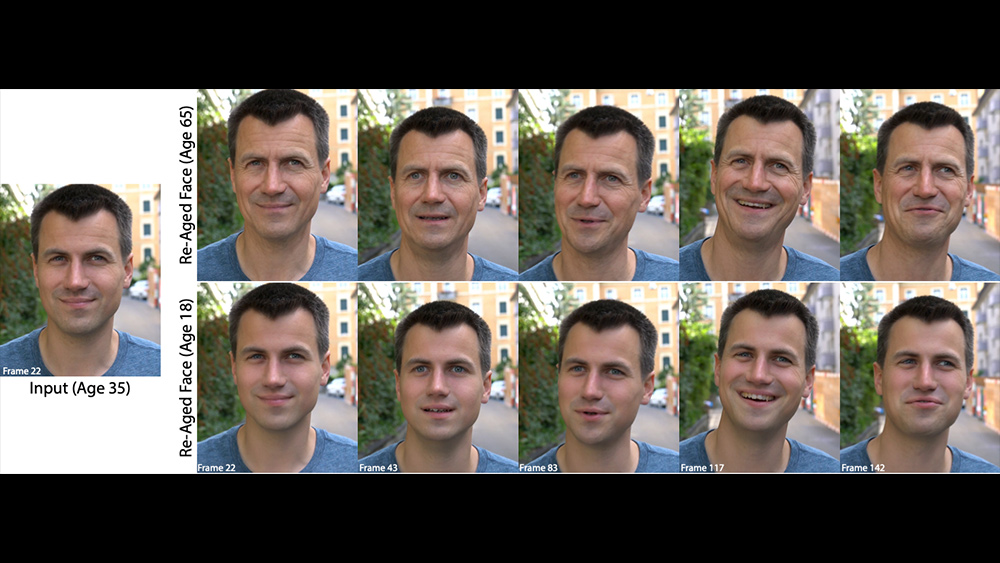Making actors look older or younger has been a eternal challenge for movie studios. It used to be achieved through fairly cumbersome and not always convincing prosthetics and makeup effects. That was then largely replaced by time-consuming digital VFX techniques, but it looks like Disney's come up with a game changer.
While publicly accessible AI image generators make an impact on the creative fields, Disney has been working on a studio-quality AI model that can age (and de-age) actors in a way that looks so realistic, it's scary (for more on the use of AI in other creative fields, see how to use DALL-E 2).
Making actors look older or younger isn't new. Makeup artist have done some incredible jobs on the likes of David Bowie in The Hunger (1983) and Brad Pitt in the Curious Case of Benjamin Button (2008) – the latter had 56 people working in hair and makeup. More recently VFX has upped the game, and in Captain Marvel (2019), we saw Samuel L. Jackson de-aged by about 25 years.
Traditional VFX can take a huge amount of time, with editors manually painting frame-by-frame. But Disney Research Studios has just revealed a solution it's been working on that looks like it can achieve a realistic effect in real time. It describes its Face Re-Aging Network (FRAN) as a “practical, fully-automatic, and production-ready" tool that can re-age and de-age faces automatically.

The concept isn't new. The tools uses a neural network technique, not unlike deepfake software, but until now the technology has been too unreliable for use in movies due to the loss of detail or some facial features when the subject moves. Disney's model, according to its research paper, adapts to moving images with a stunning degree of accuracy, even when the subject isn't looking at the camera.
To train FRAN, the research team gather thousands of AI-generated faces, studied how machine-learning tech would handle them. Rather than create new headshots, FRAN recognises the parts of the face that are likely to be affected by age – for example smile lines and wrinkles around the eyes. It layers these features over the top of the subject’s face, creating a stable, and terrifying realistic effect that preserves the original facial features in different lighting conditions and from different angles.
The results are amazing, but also a little scary. Deepfakes still have a few tell-tale signs that tend to give them away, the most obvious is their weakness in showing a subject in profile. We'll be looking out to see how Disney puts the tech to use. Its latest animated release, Strange World has been a bit of a flop (a lot of people are blaming Disney's own lack of marketing, but over on Disney+, Disenchanted has been going down a storm.
Get the Creative Bloq Newsletter
Daily design news, reviews, how-tos and more, as picked by the editors.
Read more:

Thank you for reading 5 articles this month* Join now for unlimited access
Enjoy your first month for just £1 / $1 / €1
*Read 5 free articles per month without a subscription

Join now for unlimited access
Try first month for just £1 / $1 / €1

Joe is a regular freelance journalist and editor at Creative Bloq. He writes news, features and buying guides and keeps track of the best equipment and software for creatives, from video editing programs to monitors and accessories. A veteran news writer and photographer, he now works as a project manager at the London and Buenos Aires-based design, production and branding agency Hermana Creatives. There he manages a team of designers, photographers and video editors who specialise in producing visual content and design assets for the hospitality sector. He also dances Argentine tango.
